|
I would like to recommend the multilingual book Milit ä rische Fernglasser un Fernrohre in Heer, Luftwaffe und Marine (Military Binoculars and telescopes for Land, Air and Sea Service) by Hans Seeger |

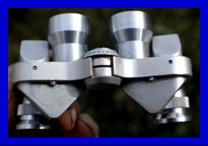
|
Japanese External Reverse Porro Prism Binoculars. WEBSITE MUSEUM |
|
OTHER BINOCULARS #5 & OPTICAL SIGHTS |
|
- SWAP SHOP & MISC - MISC #1 - MISC #2 - BINOCULARS CATALOGS #8 - BINOCULARS CATALOGS #9 - INDEX #1 - INDEX #2 |

|
As our holdings of miniature binoculars and catalogs have gotten massive, and as Covid has made international acquisition/shipment much more difficult or impossible, I decided to add some space to be able to indulge myself in exploring some other types of binoculars and optics. |
|
Taylor Optical Factory Manufactured Salesman Sample Cutaway Binoculars |
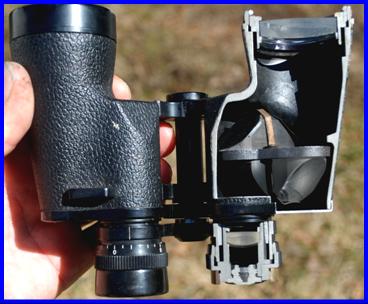
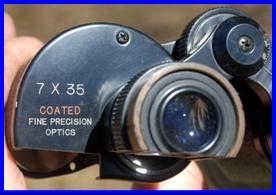
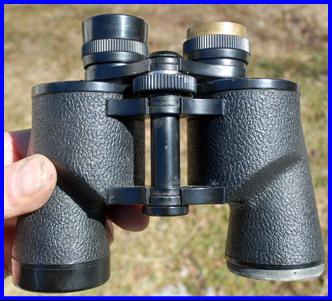
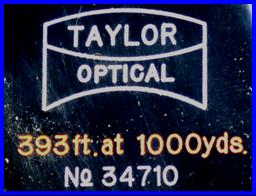
|
My Taylor Optical 7x35 binoculars are a salesman sample or trade show factory cutaway to show off it’s various internal components. |
|
WANTED TO PURCHASE FOR THIS MUSEUM: FACTORY CUTAWAY BINOCULARS. Contact miniature.binoculars@gmail.com |
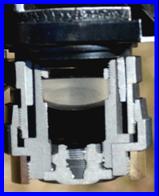
|
U.S. Military WWII M-6 Tank Periscope (Stuart Light Tank) |
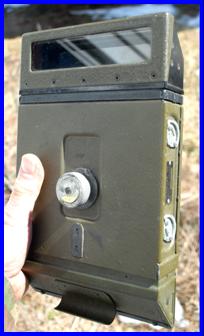

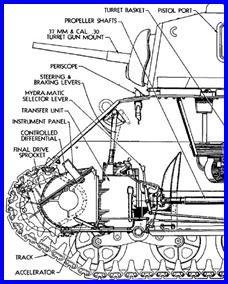

|
Stuart M5 turret periscope |
|
Stuart M5 front periscope |
|
My U.S. WWII era M-6 tank periscope was derived from the British Vickers Mk IV periscope, itself derived from the Polish Gwz 34 periscope. As many as 5 were on the WWII M3 and M5 Stuart light tanks, and also used in other AFV applications, and similar periscopes were used in Sherman tanks. This is a fairly common surplus optical device. |

|
Stuart M3 turret periscope |
|
Stuart M5 hatch periscope |

|
Military No2 Mk 1AFV Armored Vehicle Binocular Periscope |
|
My No 2 Mk 1/1 Binocular Periscopic A.F.V. (Armored Fighting Vehicle) was derived from WWII trench periscope designs, which permitted a magnified view without exposing your head to sharpshooter/ sniper fire. Mine was made in 1980 and has a low 273 serial number and Hebrew markings. |
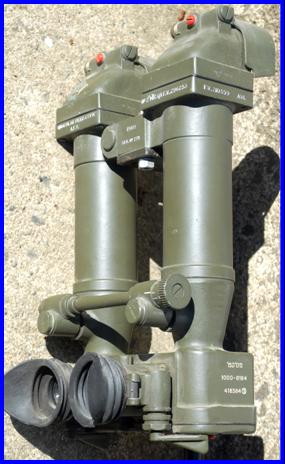
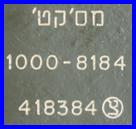

|
This type of UK design (No 2 Mk1/1, 1/3 etc) is often observed marked A.K.& S, (UK optics maker A. Kershaw & Son) from around 1948. While marked A.F.V. (Armored Fighting Vehicle) these were also specifically intended for tripod, trench, bunker and AFV use. It is known that Israel bought a quantity of these from the UK. But the late 1980 date (post A.K. & S); low serial number; and lack of marked UK maker suggests this example may have been manufactured or assembled in Israel ? (speculation). |

|
1944 WWII Russian KOMZ 6x30 Military Binoculars with an Interesting Story |
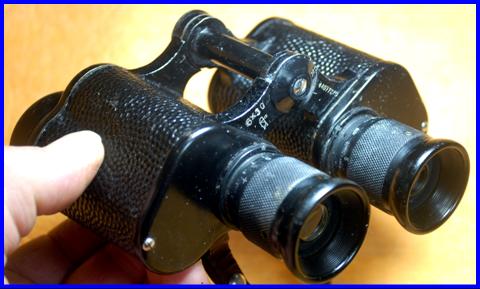
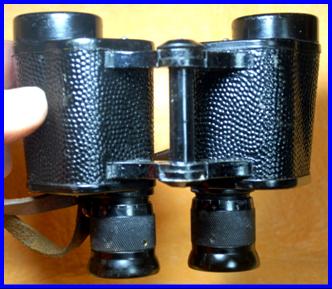
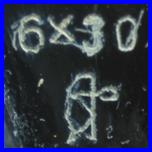
|
The KOMZ logo is a light arrow being routed through a prism. Note crude wartime marking methods used. |
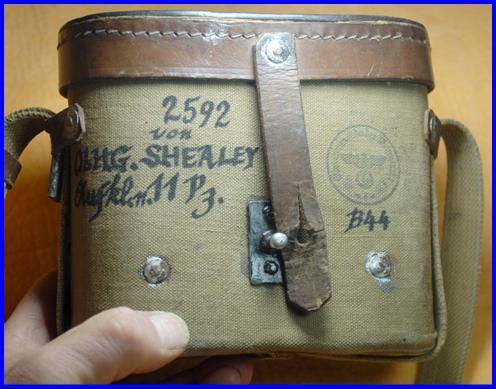
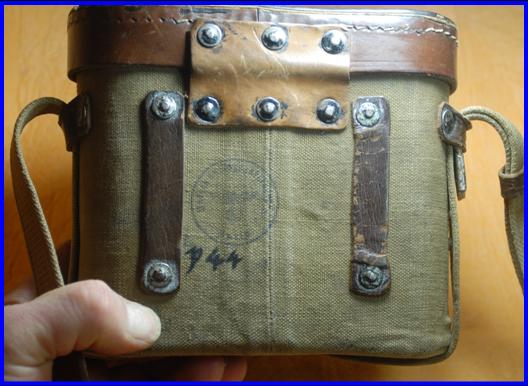
|
My WWII Russian KOMZ ( Казанский оптико-механический завод / Kazan Optical Mechanical Factory) binoculars were produced in early in 1944 (serial number 44077210, with the first two prefix numbers of KOMZ binocular serial numbers being the year of manufacture), and these binoculars were rather quickly captured by German forces, possibly the 11th Panzer division at Cherkassy in Feb 1944. The case of these binoculars is marked to German Oblt. (Oberleutenent) G. von Shealey of Aufkln (Aufkl ä rungsabteilung/Reconnaissance detachment) kompanie 3 of the 11P (the 11 Aufklarungs–Abteilung with it’s 3rd company was the reconnaissance detachment of the 11 th P anzer division). After Cherkassy, the damaged 11th Panzer division was withdrawn to southern France near Libourne/ Bordeau for rebuilding and was reorganized with acquisition of the 416 Grenadier Regiment and 273 Reserve Panzer division. Perhaps relevant to the B44 / 1944 Oberkommando der Wehrmacht stamp, the 11th Reconnaissance Abteilung was reorganized in May 1944 by absorbing the Reserve Reconnaissance Abteilung 7, and perhaps relevant to the P44 /1944 Untech und Ausrustungsfeldlayer stamp (Technical and Equipments Field Warehouse Paris) on July 11 1944 the 11 Aufklarungs–Abteilung was converted into a Versorgunangs-Kompanie (Supply Company) with fieldpost number 09426. I know from direct contact with veterans that by mid 1944 German reorganization and refitting made the best of shortages using substitute standard items (like refitted soldiers using a French military compass, and a newly issued AC44 P38 pistol going into a p08 luger holster). Fairly new and serviceable binoculars and case were probably judged to be a perfectly acceptable substitute if standard issue binoculars were unavailable. In cases where larger quantities of substitute standard items were used, they were given their own German model designation. |
|
1950 Starrett Cased Transit No 99F |
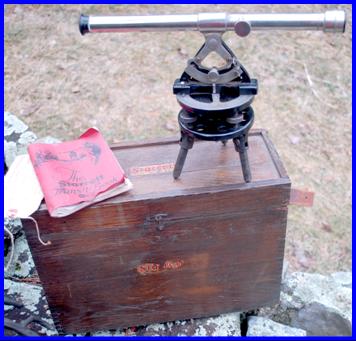
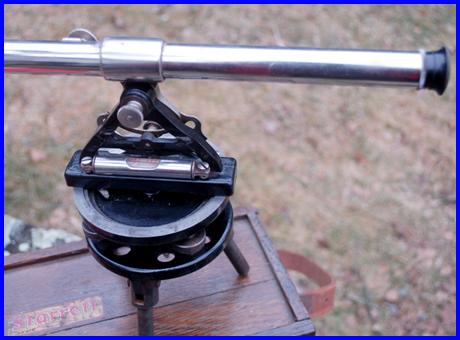
|
Another type of optics I have accumulated is cased transits. Most are made to attach to a tripod, but my 1950 Starrett 99F has it’s own table top tripod legs, made by the famous manufacturer of machining measuring instruments. Optical transits and levels are used in surveying, determining elevations and angles. |
|
Post WWI Civilian Pseudo “Model 08” Non Military Binoculars |
|
So many American and French soldiers brought home captured German noncom model 08 Military binoculars that after WWI it created enough civilian demand for American and French firms to make and sell knock off civilian center focus binoculars intended to resemble “08” binoculars and marked as being them. In the normal way of marketing creating self serving illusions, the U.S. binoculars binoculars were marked “ARMY” and “08” and of course are neither. But to this day people are deceived. |
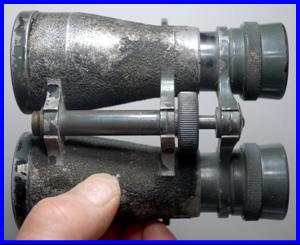
|
French “model 08” civilian binoculars |
|
Uncommon Types of Older Variable Power Civilian Binoculars Seefar & Atlas |
|
The idea of variable power or variable magnification binoculars is not new, and a few different methods have been used, including that used by these two older binoculars. The Seefar binoculars on the left cam the two ocular lens packs to increase magnification. They were made by the Japanese manufacturer Toyoshima Koki Seisakujo (manufacturer code JB164) and carry a presumed exporter mark of “T.K.C”. (not identified). The Atlas binoculars on the right rotate a turret to select oculars to give either 8x or 12x magnification. I associate Atlas binoculars as probably dating to the 1950’s. Though “zoom” variable power binoculars are popular today, image and collimation compromises inherent in their design make them optically inferior to fixed power binoculars. |
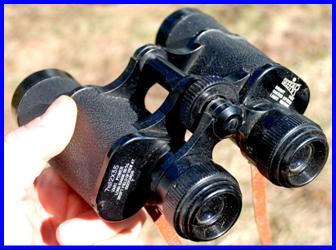
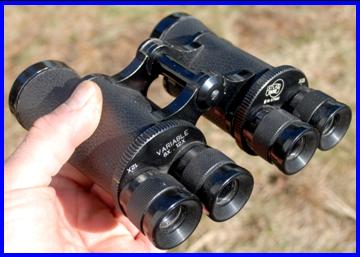
|
These Atlas binoculars use rotating turrets to align two ocular sets for either 6x or 12x magnification. |

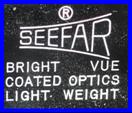
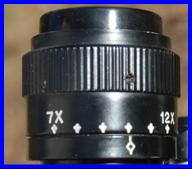
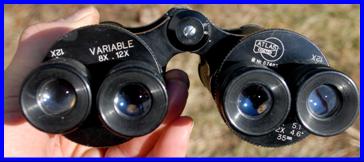
|
Seefar cam oculars to provide 7x to 12x power variable magnification. |

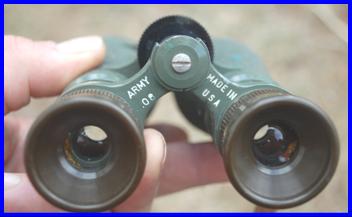
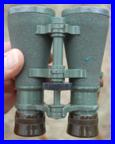
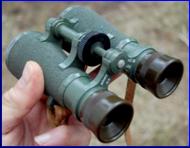


|
1944 WWII NIL No 5 Mk 5 Mk 5 Canadian Issue Binoculars |
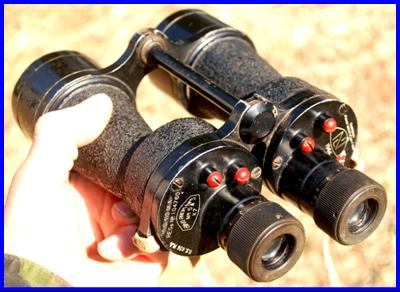
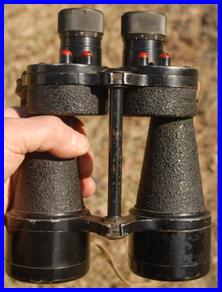
|
My 1944 dated Canadian issued British manufactured No 5 Mk 5 7x50 binoculars were made by NIL/ Nottingham Industries Limited. NIL appears to have been a UK Ministry of Supply created wartime company (1941-1946) which was set up in what had previously been a cigarette factory, but with optics and binocular manufacturer Ross operating it. The binoculars carry the WWII era UK and commonwealth military property broad arrow mark, and red W waterproofed mark, and desiccant ports with the red paint authorized removal/sealed paint, and the case has a C and broad arrow Canadian military property mark. As released, this one has no ranging graticule. |
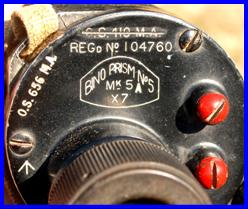
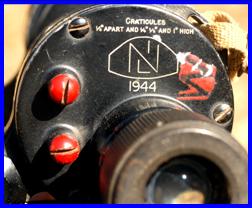
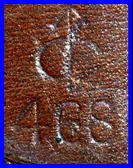
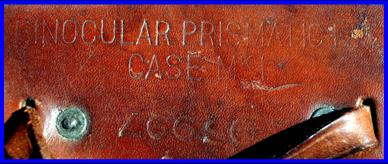
|
WWII U.S. AIR FORCE BENDIX 1942? OPTICAL BUBBLE AIRCRAFT AN-5851-1 SEXTANT |
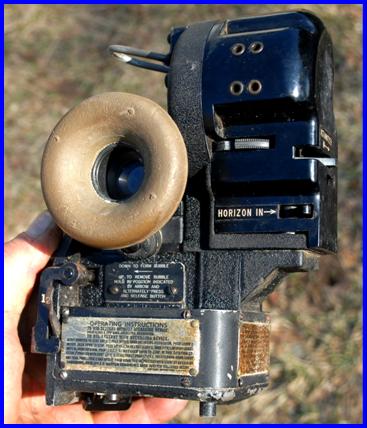
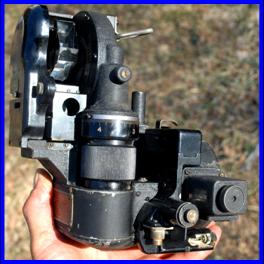

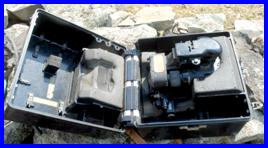
|
My WWII U.S. Air Force AN-5851-1 Aircraft sextant was used for night navigation of large aircraft, including the B-17 bomber and PB4Y-2 bomber. It would be hung on a special arm for the navigator to take readings out of the bubble canopy, and it has a couple integral lights for night use. It was optical, complex, looked interesting, had an interesting case, and was $30 at my local flea market. |


|
U.S. SECRET SERVICE MIRADOR LIMER 11 X 80 BINOCULARS |
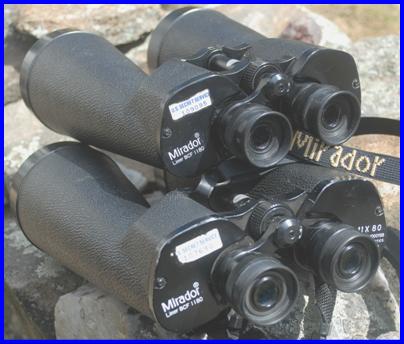
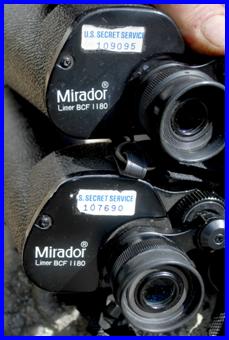
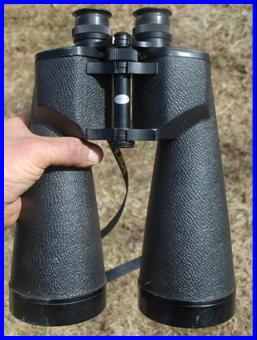
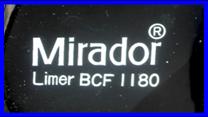
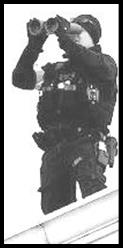
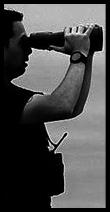

|
The U.S. Secret service uses large high power binoculars to observe crowds, buildings, and surroundings as an integral part of their protection and counter sniper activities. Like all their other equipment, their optical equipment gets periodically replaced or changed or upgraded. When a company that specialized in purchasing surplus government equipment at auction and then reselling it obtained a few of these US Secret Service property marked Mirador Limer 11x80 binoculars some years back, I purchased two. Though my interest was probably more about the secret service label on the binoculars, I do like these. Even with 1,200 or so binocular to choose from, these are one of a handful I regularly grab to in order to use. Like other specialty items, they are suited for special circumstances and conditions. Mirador is indicated as a registered trademark, but does not seem to show up as as a US trademark in TESS, but does show up as Canadian trademark TMA294949 for binoculars 1984-2000. Mirador binoculars were associated with Mirador Optical Corporation of Marina Del Rey Ca. in many US binoculars trade listings, and Mirador Optical Corporation was a registered Ca Corp 9/12/1982 until dissolved 10/28/2010. The U.S. Mirador entity is presumed to be as an importer/ distributor, as Mirador also had a sales presence in Europe. |